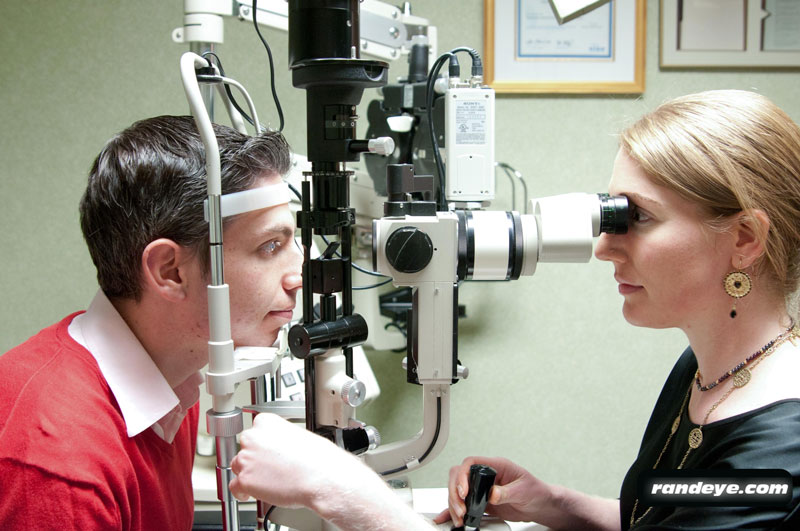Celebrating Senior Independence Month
 July is recognized by The American Academy of Ophthalmology as “Celebrate Senior Independence Month.” As we all celebrate our independence on July 4, we should appreciate the importance of independence to our senior population. The ability to live, and enjoy life independently is taken for granted by many, but becomes a source of increasing concern in an aging population dealing with various maladies, infirmities, and incapacities.
July is recognized by The American Academy of Ophthalmology as “Celebrate Senior Independence Month.” As we all celebrate our independence on July 4, we should appreciate the importance of independence to our senior population. The ability to live, and enjoy life independently is taken for granted by many, but becomes a source of increasing concern in an aging population dealing with various maladies, infirmities, and incapacities.
As Ophthalmologists, we have many patients for whom independent living and functioning becomes more difficult due to vision problems. Thankfully, many of these problems can be avoided, or the effects minimized. Modern treatment of cataracts, glaucoma, macular degeneration, and other retinal diseases have revolutionized our field, and allowed millions of our seniors to continue to function at the highest levels well into their 80’s, 90’s and beyond.
Proper eye care requires regular examinations to detect early disease, before symptoms have even begun. This is especially true with glaucoma and macular degeneration where significant damage can occur before a patient notices a change in vision.
In addition to regular exams, seniors should maintain a healthy lifestyle with proper diet and exercise, avoid smoking, and wear sunglasses while outdoors in our bright Florida sunshine. Wearing proper eye protection is important when playing certain sports or when doing certain household or gardening chores, and especially when working with noxious household chemicals.
If seniors practice proper preventative eye care, and receive regular examinations and timely treatment, they are likely to maintain excellent vision, a crucial ingredient to living and functioning independently.
Keep Your Eyes Young
No one wants to wake up one morning to find wrinkles or bags around their eyes when looking in the mirror. Signs of aging catch most people off guard and before they know it, it’s too late. While you’re attempting to keep your skin looking fresh and radiant with creams and treatments, why not keep your eyes looking young also?
The skin closest to the eye is very sensitive and can easily be affected by one’s lifestyle. Collagen is the protein that maintains the skins firmness and keeps it plump. Cortisol, a hormone released from stress, creates loss of collagen, and the skin in turn thins out. Some signs of aging include crow’s feet, crepe-y eyelids, and dark circles and there are several ways to prevent these changes. The key to keeping the wrinkles and circles away is to follow proper defense mechanisms for the eyes.

• Get at least 8 hours of sleep every night
• Be gentle when applying and removing makeup
• Wear sunglasses to keep you from squinting
• De-stress and find time to relax
• Use hydrating moisturizer with antioxidants
June is Cataract Awareness Month
June is Cataract Awareness Month, so make the most of it while learning about how to keep your eyes safe and healthy. A cataract is when the natural lens gets clouded, which is a light-sensitive tissue that helps the eye focus, the result of the clouding could mean distorted or blurred vision. If a cataract is left untreated and is disregarded not only can it impair your vision but it may even cause blindness.
There are many things that can affect ones chances of developing cataracts, such as; family history, radiation, high blood pressure and obesity. Cataracts affect 1/6 of Americans past the age of 40. Once around 75 years old, roughly 70% of people will have cataracts.
Coming to get your vision checked is more than just a monthly or yearly check up, it is about seeing clearly and improving your life with clear vision. Imagine going to see a movie or driving on the road, you might be having a hard time seeing the screen or even a red light. At the end of the day, scheduling an appointment with a licensed ophthalmologist is best way to go. This will help you stay healthy and independent.
UV Exposure to the Eyes and Wearing your Sunglasses
A recent poll taken through the American Academy of Ophthalmology (AAO), shows that there is a need for greater awareness regarding the sun’s sensitivity and UV safety. In addition, the poll also states that the majority of Americans are unaware that taking common everyday drugs, while having light-colored eyes can make them more vulnerable to UV exposure. This happens to be a contributing factor to certain eye conditions and diseases.
Such diseases consist of eye cancers and cataracts, which are some of the leading causes of blindness in the world. Higher amounts of UV exposure might not cause permanent blindness, but it can cause temporary blindness, in some cases.
Here are some tips to follow when trying to protect your eyes from the sun:
- Choose glasses that block 100% of UV rays (both UV-A and UV-B). Avoid blue tinted sunglasses (they emit UV light which you are supposed to be blocking out).
- Wear sunglasses even when it is cloudy outside (UV rays go through clouds and can still affect you).
- Wear a hat (even with your sunglasses).
- Be aware of what medicine you are taking (as some can increase UV sensitivity).
- Going to the beach? Be prepared, the sun reflects off the sand and water, so wear those shades.
- Contact lenses may not have UV protection, so remember to surely wear your sunglasses.
- Use non-irritating sunscreen: PABA free (it can irritate the eyes).
It’s May – Healthy Vision Month and UV Safety Month
As we all know our eyes are an important part of our health and there are many things that you can do to keep them healthy, starting with…
Get a comprehensive dilated eye exam. Sometimes people do not realize that they have an eye problem until it’s too late. So getting an eye exam at your eye care specialist or ophthalmologist is the best thing that you can do to really be sure. When it comes to common vision problems, some people don’t realize they could see better with assistance.
Many common eye problems such as diabetic eye disease, glaucoma, and age-related macular degeneration often do not show warning signs. Getting a dilated eye exam is the only sure way to detect these eye issues in their early stages.
Sports Eye Safety Awareness Month
Comprehensive Ophthalmology, Refractive & Cataract Surgery
Any participant in recreational sports who suffers an eye injury, who has an eye disease, or who has had eye surgery should discuss with their eye doctor when they can safely return to their sport and what precautions they should take. A common sense approach to the real eye risks inherent in sports activities can make participants safer and minimize the chances of losing their precious eyesight.
Preventing Eye Injuries at Home and the Workplace
Prevent Blindness America states that the most common agents of eye injuries in the workplace are:
• Flying objects (bits of metal, plastic and glass)
• Air or wind-blown objects (dust, wood and sand)
• Tools (screwdrivers, wrenches and etc.)
• Chemicals (oil, gasoline and acid)
• Harmful radiation (welding arcs and UV)
Prevent Blindness America (PBA) has estimated that 2.4 million eye injuries occur is the U.S. each year. About 1 million Americans have lost some degree of eyesight related to an eye injury. Experts say that wearing safety glasses or taking other common precautions can prevent or lessen the degree of more than 90% of these eye injuries.
At home, household cleaners and chemicals are the leading causes of eye injuries. The most common objects that cause the injuries besides chemicals and cleaners are:
• Mascara brushes and other cosmetic applications
• Fingernails (when applying and removing contact lenses)
• Lawn/Garden hand tools and machines
• Bungee cords
• Eyelash curlers
• Falls, bumping into walls, etc.
• Champagne corks
• Battery acid
• Toys/Games with hard/sharp edges
If there is a mishap you should contact your ophthalmologist immediately for
advice. Depending on the situation, your eye doctor may want you to flush your
eye/s with water or saline solution prior to your visit. He or she might also
recommend that you immediately go the hospital for further help. When working
with chemicals a sink should be near by at all times. If an accident occurs you should
flush your eyes with water for several minutes to dilute and rinse out any chemicals
that may have come into contact with your eyes.
Save Your Vision Month & Workplace/Eye Wellness Month
Comprehensive Ophthalmology, Refractive & Cataract Surgery
The eyes really are a window to the rest of the body as much as they are to the world. A simple eye examination can reveal many of the most common or even the most rare medical conditions. For example, did you know that certain eyelid changes are associated with obstructive sleep apnea, a condition that may otherwise go undiagnosed for years? Or that sometimes the only way to tell if there is inflammation or an infection in the body is to look into the eye!
Also, many eye conditions are silent, only manifesting in symptoms once it is too late to prevent permanent vision problems. For example, by the time a peripheral vision deficit is noticed in glaucoma, already at least 25% of the nerves responsible for vision have been permanently damaged! And there are many signs of diabetic retinopathy in the eye that require treatment to prevent vision loss before one would notice a change in vision. Therefore, please don’t wait to go to the ophthalmologist. We are here to make sure you can always use your eyes as a window to our most beautiful world.






